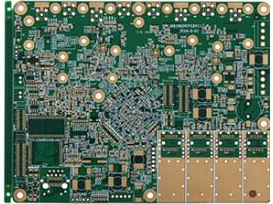SMT is a surface mount technology, which is the process of mounting electronic components on a PCB board. So how much do you know about the electronic components on the PCB board? Let's take a look!
SMC: Surface Mounted Components (Surface Mounted commponents)
mainly include rectangular chip components, cylindrical chip components, composite chip components, and special-shaped chip components.
SMD: Surface Mounted Devices (Surface Mounted Devices)
mainly include chip transistors and integrated circuits, and integrated circuits include SOP, SOJ, PLCC, LCCC, QFP, BGA, CSP, FC, MCM, etc. Examples are as follows:
1. Interconnect: Provides mechanical and electrical connection/disconnection, consisting of connecting plugs and sockets, connecting cables, brackets, chassis or other PCBs with PCBs; however, the actual connection with the board must be through surface mount Type contact.

2. Active electronic components (Active): In analog or digital circuits, you can control voltage and current by yourself to produce gain or switching, that is, respond to applied signals and change your basic characteristics. Passive electronic components (Inactive): When an electrical signal is applied, it does not change its characteristics, that is, it provides a simple and repeatable response.
3. Odd-form: Its geometric shape factor is peculiar, but not necessarily unique. Therefore, it must be mounted by hand, and the shape of the shell (in contrast to its basic function) is not standard.
For example: many transformers, hybrid circuit structures, fans, mechanical switch blocks, etc.
Chip chip resistance, capacitor, etc., size specifications: 0201, 0402, 0603, 0805, 1206, 1210, 2010, etc. Tantalum capacitor, Size specifications:
TANA,TANB,TANC,TANDSOT
Transistor, SOT23, SOT143, SOT89, etc.
Melf cylindrical element, diode, resistance, etc.
SOIC integrated circuit, Size specifications: SOIC08, 14, 16, 18, 20, 24, 28, 32
QFP close foot pitch integrated circuit PLCC integrated circuit, PLCC20, 28, 32, 44, 52, 68, 84
BGA ball grid array package integrated circuit, array pitch specification: 1.27, 1.00, 0.80
CSP integrated circuit, the side length of the component does not exceed 1.2 times the side length of the chip inside, microBGA with array spacing <0.50
SMT noun explanation
Bridge (Tin Bridge): Solder that connects two conductors that should be conductively connected, causing a short circuit.
"Buried" via (buried via): The conductive connection between two or more inner layers of the PCB (that is, invisible from the outer layer).
CAD/CAM system (computer-aided design and manufacturing system): Computer-aided design is the use of specialized software tools to design printed circuit structures; computer-aided manufacturing converts this design into actual products. These systems include large-scale memory for data processing and storage, input for design creation, and output devices that convert stored information into graphics and reports
Capillary action (capillary action): a natural phenomenon that causes the molten solder to flow against the gravity on solid surfaces that are close to each other.
Chip on board (COB board surface chip): A hybrid technology that uses face-up chip components that are traditionally connected exclusively to the circuit board substrate layer by flying leads.
Circuit tester (circuit tester): A method of testing PCBs in mass production. Including: needle bed, component pin footprint, guide probe, internal trace, loading board, empty board, and component test.
Cladding (covering layer): A thin layer of metal foil is glued on the board to form PCB conductive wiring.
Coefficient of the thermal expansion (temperature expansion coefficient): when the surface temperature of the material increases, the measured material expansion per degree of temperature (ppm)
Cold cleaning (cold cleaning): an organic dissolution process, liquid contact to complete the removal of residues after welding.
Cold solder joint (cold solder joint): a solder joint that reflects insufficient wetting, characterized by insufficient heating or improper cleaning, and its appearance is gray and porous.
Component density (component density): The number of components on the PCB divided by the board area. "Conductive" epoxy (conductive epoxy): A polymeric material that is passed electrical current by adding metal particles, usually silver.
Conductive ink (conductive ink): glue used on thick film materials to form a PCB conductive wiring diagram.
Conformal coating (conformal coating): A thin protective coating applied to PCBs that conform to the assembly shape.
Copper foil (copper foil): a kind of cathode electrolytic material, a thin, continuous metal foil deposited on the base layer of the circuit board, It acts as a PCB conductor. It easily adheres to the insulating layer, accepts the printed protective layer, and forms a circuit pattern after corrosion. Copper mirror test (copper mirror test): a flux corrosion test, using a vacuum deposition film on a glass plate